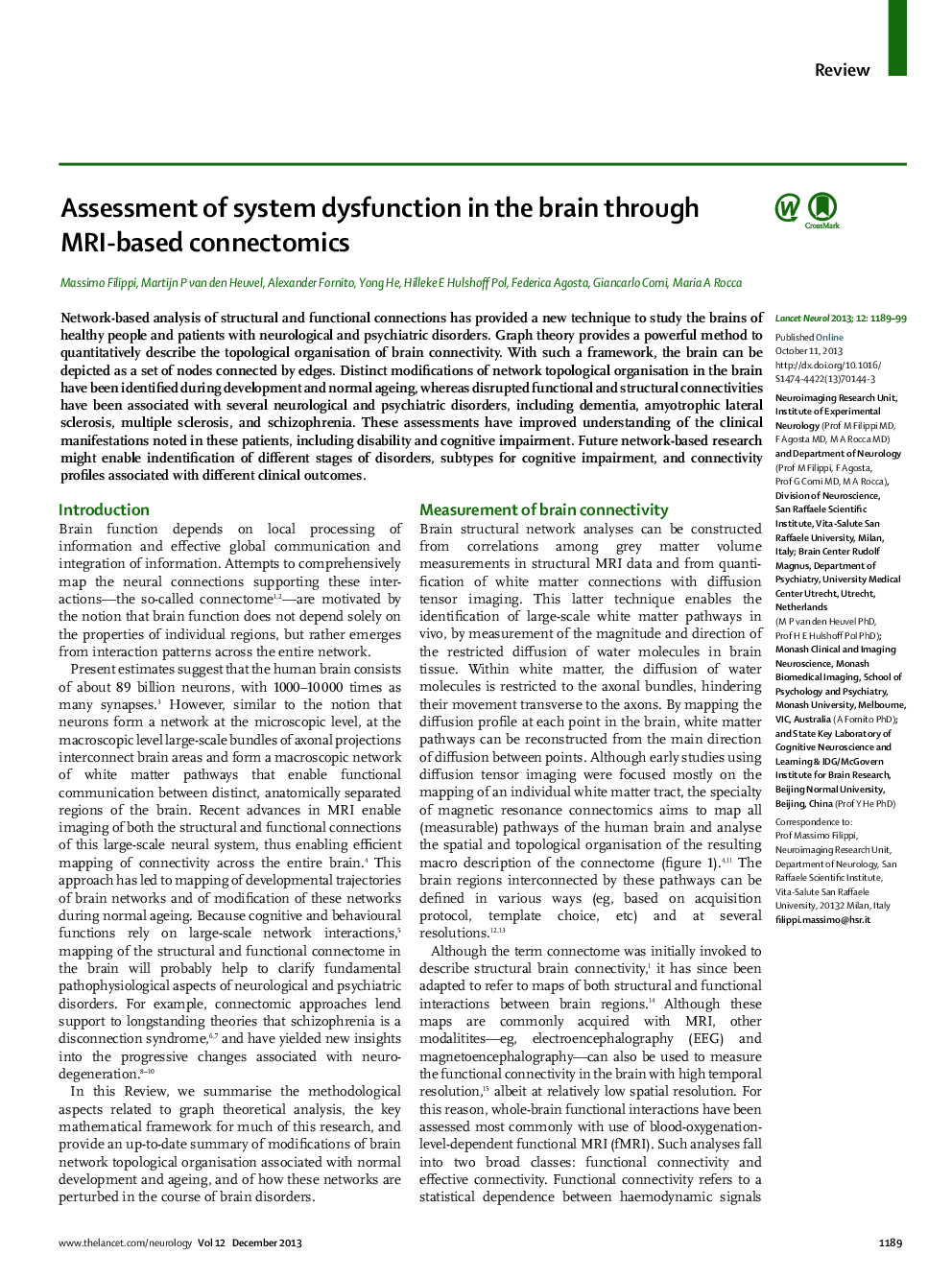| Article ID | Journal | Published Year | Pages | File Type |
|---|---|---|---|---|
| 3066943 | The Lancet Neurology | 2013 | 11 Pages |
SummaryNetwork-based analysis of structural and functional connections has provided a new technique to study the brains of healthy people and patients with neurological and psychiatric disorders. Graph theory provides a powerful method to quantitatively describe the topological organisation of brain connectivity. With such a framework, the brain can be depicted as a set of nodes connected by edges. Distinct modifications of network topological organisation in the brain have been identified during development and normal ageing, whereas disrupted functional and structural connectivities have been associated with several neurological and psychiatric disorders, including dementia, amyotrophic lateral sclerosis, multiple sclerosis, and schizophrenia. These assessments have improved understanding of the clinical manifestations noted in these patients, including disability and cognitive impairment. Future network-based research might enable indentification of different stages of disorders, subtypes for cognitive impairment, and connectivity profiles associated with different clinical outcomes.
